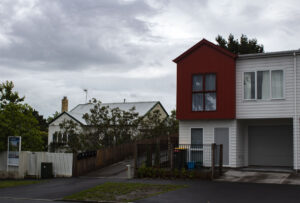Waikato indie film, and what you didn’t know
The Waikato has been one of the up and coming locations for film in New Zealand, you just didn’t know it.
There is a community growing within the Waikato that has been slowly gaining traction over the past few years but still remains relatively underground. The Waikato indie film scene has yet to gain wide public attention, however is well on its way to make the Waikato one of New Zealand’s hubs for small and large film productions.

Just like all good origin stories, the Waikato Film Hub started with a group of like-minded people. A network was established though the Facebook page ‘Hamilton Film Makers Collective’, a place where local filmmakers and creatives could network to support each other making a variety of projects. After ten years, this page was expanded to encompass the entire region. In early 2018, the independent film festival ‘Misty Flicks’ was established and has remained a key part in screening local indie film productions to the public within the region. Since then, the Waikato Film Hub has been growing its network, setting up a board, and as of 2019 officially becoming a trust with the goal of supporting filmmakers to create content, assist with their learning and development, and encourage the community to connect with each other.
Around that time, ‘Waikato Screen’ was created as a screen office to promote the sector to the rest of New Zealand. This initiative was supported by Creative Waikato, Te Waka, Hamilton Central Business Association, and Hamilton & Waikato Tourism.
The Waikato seems to be well on its way to becoming a hub for film connoisseurs to pursue their passions. Paige Larianova has been spear-heading the efforts to get the Waikato film sector to where it should be.
Over the past few months, the Waikato has been busy with various productions, including the short films ‘Small waves’ and ‘Drink up, you’re next’.
‘Small waves’ is an adaptation of the book ‘White Lies, Maori Legends and Fairy Tales‘, by local writer and primary school teacher Falstaff Dowling-Mitchell. It’s a story about three school friends and their efforts to overcome a school bully, whilst also exploring the clash between European and Māori culture. On his thoughts of Waikato’s appeal for filming, Auckland-based director and Shortland Street actor Matthew Walker stated:
“Hamilton needs to be seen as more of a location for film. The Waikato frost and mist rising off the river is such an atmospheric and film-worthy place.”
Small waves director, Matthew Walker
‘Drink up, you’re next’ is a short drama that focuses on the negative cultural impacts of binge-drinking in New Zealand. The short film also spotlights a toxic male culture that still exists within New Zealand by spotlighting a dysfunctional father-and-son relationship.








Behind the scenes of ‘Drink up, you’re next’.


So why the Waikato?
We can see that the infrastructure is in development and productions are becoming more and more frequent. So what makes the Waikato so appealing, and more importantly, what does the future hold for Waikato indie film?

With all of these productions taking place in our region, what makes Waikato the prime location for film over the likes of Auckland or Wellington? I spoke with Fiona Jackson, a local film producer and tutor who has spent years in the industry both in New Zealand and California, and produced a feature film in the Waikato. I asked for her thoughts on what draws filmmakers to the region.
Fiona expressed that, although Hamilton doesn’t have the same industry infrastructure as Auckland or Wellington, there are benefits to being based in the Waikato.
She has found that generally, people are more accommodating when asked if you can film at their location. “I’ve walked into a café and within 5 minutes, secured a location for that afternoon’s shoot and an actress to play a small part in our feature film”.
The Waikato film community are very supportive. Whether it be helping source props or wardrobe or appearing on screen or as part of the crew, the Waikato seem to be the most accommodating. “When we hired crew from Auckland, they often had to leave our project when they were offered paid work on a larger set. Hamilton-based filmmakers generally have their ‘real’ job and make films on the weekends, meaning their availability matches mine”.
Fiona pointed out that the amount of work in the area is increasing, however we only have a small pool of skilled filmmakers. “I’m often looking for projects for my film students to intern on, and because projects are always looking for crew it’s easy to find work experience opportunities. This is also beneficial for other emerging filmmakers who are looking for ways to increase their skills and connections”.
Another benefit is the Waikato’s variety of locations. Fiona makes mention of the abundance of locations that are within easy driving distance, and traffic congestion in comparison to other cities is non-existent. “Within an hour drive we have beaches, rivers, mountains, waterfalls, small towns, farmland, almost any location you might need”.
However, Fiona mentions a few drawbacks to basing a production in the Waikato. At times her crew have had to source gear from Auckland and mentioned that it can be difficult to find crew. “Though it’s great to train people and expand our talent pool, it does take time and it can really slow down production if there are too many people who aren’t familiar with how a set operates or how to perform their role”.

I also spoke with Peter Young, an Auckland based cinematographer who was raised in the Waikato and studied film at Waikato University. I asked for his thoughts on the need for infrastructure and training, and if he had any hypothetical solutions to this dilemma. “When I left Uni, I was probably one of the few people who just really wanted to make videos, and I remember that once I stepped out of the class room there was this idea that you were on your own, and I remember being quite disappointed by that.”
Peter mentions that if there was a network of people that focused on mentorship for the ‘up and coming’ filmmaker, it would put the Waikato in a position to bring up the collective skillset of its filmmakers, and would boost the quality of the productions. “You want somebody to actually get out there and help you, because there’s only so much help you can get from within four walls”.
Although there are ways to get support for film projects in the Waikato, at the moment they are primarily in the form of funding. Peter believes that if there was an equal focus on professional development, that the films coming out of the region would be of a quality that would make the rest of the country take notice.
“I would like to have a building that people can come and network and use the facilities.”
Paige Larianova
“For what the Waikato have to offer, it would make sense to have a film office here.”
Fiona Jackson
“If the focus was equal between education and funding, the industry would skyrocket”.
Peter Young
After speaking at length with these local film practitioners, it’s clear that the Waikato has both a plethora of talent and opportunity. Filmmakers in the region have both the desire and the drive to make the area a thriving hub of film activity. Though progress towards having an official film office has been slow, due to its growing talent pool and diverse range of locations, the region is now well on its way to becoming a key location for large studio, and independent productions. So keep a look out, because the next box office buster could be produced right around the corner.




